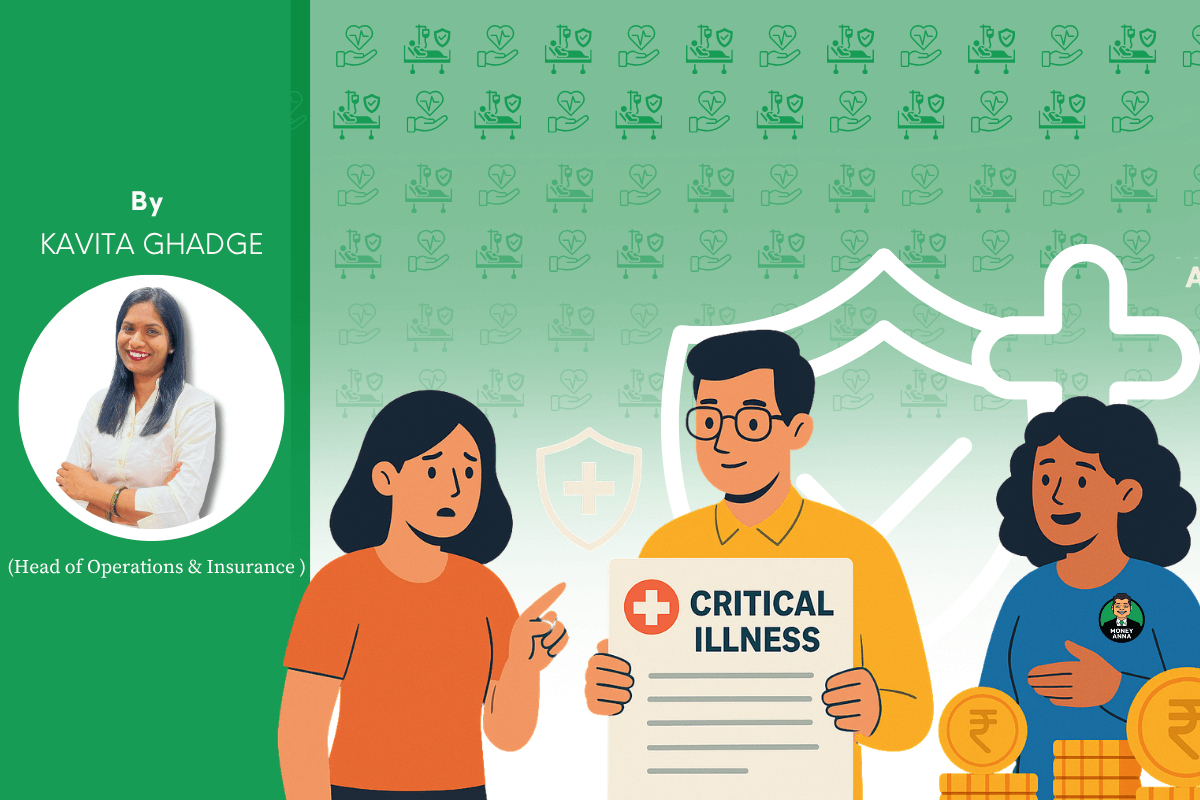What’s in the blog?
This blog is your step-by-step guide to choosing the right health insurance plan for your family. From understanding your needs, selecting the right sum insured, and decoding policy features to comparing options and preparing documents, it covers everything you need to make a smart, informed decision. Because health insurance is your financial shield in case of a medical emergency.
Working in the insurance sector has taught me one very important lesson in life – though we can’t control the uncertainties of life, we can definitely prepare ourselves better for them.
No one plans to fall sick or end up in a hospital. If we could, we all would have avoided it our entire lives. Yet I’ve seen healthiest and most active clients face medical emergencies – an accident, a surprise diagnosis, or a sudden illness without prior symptoms. I have received the first call, sometimes even before the family, in many such critical moments. Those are the moments when the importance of having the right insurance coverage truly hits.
So here, my readers, I’ve written this easy-to-understand guide for choosing the best health insurance plan for your family’s needs. Because we believe it is important to keep you and your family financially secure when it matters the most.
Step 1: Understand ‘Why’ You Need Health Insurance
When it comes to goal-setting or starting something significant, we often say ‘know your why’. And, this is true for health insurance too. The majority of people make mistakes in choosing the right insurance because they treat having insurance as a ‘tick box’ item. When you clearly know why you need health insurance or how important it is for you and your family, you’ll find the patience to read the fine print too.
Before selecting an insurance, it is important to understand why health insurance is important.
- Medical emergencies are unpredictable. Accidents and illnesses can happen to anyone, anytime.
- Health insurance coverage given by employers ends as soon as you leave the job. Moreover, corporate plans often have limited coverage.
- Hospitalization bills are often so high that it’s not practical or affordable to pay out of pocket. It may wipe out your years of savings in just a few days.
Step 2: Decide ‘What’ Type of Insurance Suits Your Needs
Once you understand why health insurance is an absolute necessity, the next step is to see what type of insurance suits your needs. Are you single? Are you married? Do you have kids? Do you have dependent parents? Does anyone in your family have a pre-existing medical condition? All these factors decide what insurance will be suitable for your needs.
- If you want or think you need exclusive coverage, you may want to go for individual health insurance.
- If you want to cover your family with a single health insurance, a family floater health insurance will be the right thing. Keep in mind that this is recommended for families where members are relatively healthy.
- If any of your family members, let’s say parents, have existing medical conditions or are not so healthy, it’s better to get a separate health insurance for them rather than adding them to a family floater plan.
Step 3: Choose the Right Sum Insured and Coverage
After you have chosen the type of insurance, the next step is to choose the right sum insured and your coverage. One thing that you need to consider seriously while thinking about your sum insured is medical inflation. The medical costs are increasing exponentially every year. So, when you think of sum insured, you’ll need to consider future medical costs, not today’s expenses.
Another major factor for consideration in this case will be the place where you live. If you live in a metro city, you’ll need to opt for a higher sum insured because medical expenses in metro cities are way higher than in tier 2 and tier 3 cities.
Apart from the sum insured, you also need to think about your coverage. If there’s a history of heart disease, diabetes, or other chronic illnesses, choose a plan with comprehensive coverage. To increase your coverage limit at a lower premium, you can opt for super top-up plans.
Step 4: Check for the Key Features in Different Insurance Policies
Most people end their research for health insurance on sum insured and coverage, but they are not the only things that you need to consider while choosing the right health insurance. You need to check for other factors, including –
- Network Hospitals & Cashless Treatment – Ensure your preferred hospitals are part of the insurer’s network for hassle-free cashless treatment. Check the list of network hospitals near your city—this is very important during emergencies.
- Waiting Period for Pre-Existing Diseases (PED) – Some plans require you to wait 2-4 years before covering existing health conditions. Choose a plan with a shorter waiting period for future claims.
- Room Rent & ICU Limits – Some policies restrict room rent coverage to 1% of the sum insured. If hospitalization is needed in a private hospital, these limits may not be enough. Pick a plan with no room rent cap or opt for a higher limit.
- Sub-Limits & Co-Payment – Avoid plans with sub-limits on specific treatments (like cataract surgery, maternity benefits, etc.). Choose a zero co-payment policy so you don’t have to pay a percentage of the medical bill from your pocket.
- Exclusions – Many policies do not cover cosmetic surgeries, self-inflicted injuries, adventure sports injuries, or HIV/AIDS-related treatments. Read the exclusion list carefully before purchasing.
- Restoration Benefit – If you use up your sum insured, some plans automatically restore the amount at no extra cost.
- No-Claim Bonus (NCB) – If you don’t file a claim in a year, your sum insured increases at no extra cost.
- Riders and add-ons – Some useful add-ons include:
Maternity cover – Covers pregnancy expenses.
OPD cover – Covers outpatient consultations, diagnostics, and medicines.
Critical illness cover – Provides a lump sum payout for serious illnesses like cancer, heart disease, etc.
Step 5: Compare Different Shortlisted Policies
Based on the above criteria, you might be able to shortlist a few policies that suit your needs. So, the next step for you would be to compare these plans from different insurers. For this, you can use insurance comparison websites or consult a trusted advisor. One of the most important criteria for comparison here should be the Claim Settlement Ratio (CSR). Choose an insurer with a high claim settlement ratio so that you can get hassle-free claim settlements when needed.
And make sure that you do not proceed to buy insurance before reading the fine print. The insurer you choose might have some terms and conditions written in fine print, and you may get into trouble if you don’t fully understand them. You should be aware of the policy wordings, inclusions, exclusions, and claim process details.
Step 6: Gather All Important Documents Required
Once you have finalized the health insurance policy you are going to purchase, you need to get ready with all the required documents. Having all documents ready beforehand ensures that the process goes smoothly.
The important documents you’ll require to purchase a health insurance policy include –
- PAN Card and Aadhar Card
- Canceled Cheque or Bank Statement
- Passport Size Photo
- Height & Weight Details
- Annual Income Proof
- Medical History (if any pre-existing conditions exist)
- Nominee Details
My Take
Health insurance is an important investment in our financial security. It is a safety net that protects your savings and investments from being wiped out in case of any medical emergencies. So, you must take your time to understand the nuances and choose the right insurance policy for you and your family.
Having an experienced advisor by your side is always a good idea. They help you understand the jargon and ease the complexities. They are even more helpful when it comes to claim settlement because not all insurers are customer-friendly when it comes to settlement. Make your decisions wisely. And, if you need someone to hold your hands or show you the way, team MoneyAnna is always on their toes to help you.




